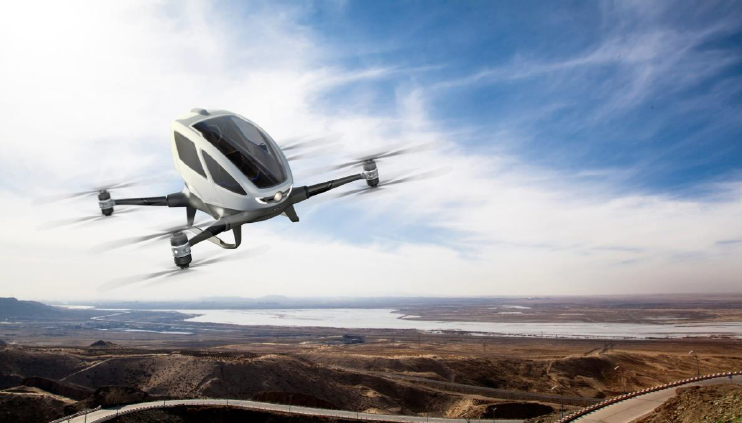
Alexandria Rhoads
Alexandria is a junior at Penn State University studying Aerospace Engineering.
In the 121 years since the Wright brothers first flew their glider in Kittyhawk, the aerospace industry has been at the forefront of innovative technologies. They’ve taken humans above the clouds, faster than the speed of light, out of the Earth’s atmosphere, and even to the Moon. Even with all of these accomplishments, we can’t help but ask “what’s next?”. From gliders to space travel, these technologies have brought us to a new age of flight – a new age where humans don’t do the flying, or at least not all of it. Autonomous flight is truly the future of the aerospace industry.
Now this doesn’t mean that the next time you fly to Florida for vacation you will have a robot flying the plane. Most people hear the term “autonomous” and immediately think self-driving (or in this case self-flying), but that is not the only application of autonomous technology. In fact, the goal of autonomous flight is not to replace the humans piloting air and spacecraft, but rather to strengthen the human-machine relationship. In some cases this may mean using unmanned systems, but overall you can rest assured knowing that you’ll still be greeted by a human pilot next time you get on a plane.
If self-flying planes aren’t the main goal of autonomous systems, what are they actually being used for? What does it mean to “strengthen the human-machine relationship”? Overall, a simple answer to these questions is to make flight safer. Autonomy is being implemented in order to ensure that the people operating and interacting with these systems are as safe as possible. According to Lockheed Martin, unmanned technologies allow systems to “go farther, operate longer and succeed in harsh and dangerous conditions”. These technologies alleviate harmful stress and strain on the human components of these systems which in turn allows them to be much safer and efficient.
A key distinction that needs to be made in the discussion of autonomous flight is the difference between autonomous systems and autonomous vehicles. An autonomous system refers to a single aspect of a vehicle that has been automated whereas an autonomous vehicle refers to a vehicle where all of the individual systems are automated. This is an important difference to keep in mind because it outlines the two different types of innovations being made by the aerospace industry.
When it comes to autonomous systems, one of the exciting up – and – coming developments would be Airbus’s DeckFinder. DeckFinder is a positioning system that allows both manned and unmanned aerial vehicles determine their relative position even in the harshest environmental conditions. This navigation system allows for easier and safer take-off and landing procedures. This system works through the use of ground, airborne, and software segments that work in triangulation to ensure a high degree of accuracy in positioning and navigation. The ground segment includes six ground units that are placed in predefined locations on the landing pad in order to calculate the distance of the vehicle from the ground. The airborne segment also calculates the distance of the vehicle to the ground and sends signals to the ground units to communicate its calculations. The software segment allows an operator to visualize the 3D position of the vehicle. These three segments work together to provide a crucial advantage to safe navigation, especially when it comes to landing rotorcraft on moving ship decks or in reduced visibility environments. With autonomous systems like DeckFinder, navigation is becoming safer and easier than ever.
On a larger scale, innovations are also being made towards entire autonomous vehicles that are being used to make military missions far safer. An example of this would be Sikorsky’s MATRIX technology which enables rotary and fixed-wing aircraft to be flown with or without humans on board. The goal for this technology is for it to one day enable utility helicopters to resupply forward forces on the battlefield without any human pilots or crew onboard. When MATRIX is paired with Sikorsky Autonomy Research Aircraft (SARA), the vehicle is able to perform full-authority flight control inputs for autonomous flight. This includes duties such as take-off, route planning, obstacle avoidance, site selection, and landing. MATRIX technology combines software and hardware components to enable autonomous flight in harsh and dangerous environments. This technology is designed to create a safer flying experience while ensuring that military operations are performed at the highest level.
Autonomous technologies are showing us the future of flight – safe and efficient. These systems allow for optimal performance even in the worst conditions, which is something that cannot be guaranteed with non-automated systems. Rather than seeking to get rid of human operators, autonomy seeks to develop systems that benefit the people interacting with them. Autonomous flight revolves around the idea of strengthening the human-machine relationship by ensuring that the machines are performing at their highest level while maintaining a safe environment for the human operators. This mutually beneficial relationship will take the aerospace industry where it has never been before – the future.



